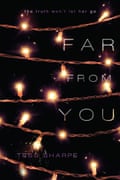In the wake of the torrent of racist abuse directed at children’s laureate Malorie Blackman last month, the award-winning young adult author James Dawson has put his head above the parapet, insisting “there are too many white faces” in kids’ books today.
Blackman’s own call for diversity unleashed a wave of what the author termed “hatred, threats and vitriol” after Sky News suggested in a headline that she had said there are “too many white faces” in children’s books. The headline was corrected after the children’s laureate explained she had never used the phrase, but now Dawson has thrown down the gauntlet.
Speaking on Wednesday to the children’s books industry in the prestigious Patrick Hardy annual lecture, Dawson argued that literature for kids “should be about the story and the voice and the characters”.
“But why are so many of these characters white, straight, able-bodied and middle-class?” asked Dawson. “Malorie did not say there are too many white faces in children’s books, but I will. There, I just did. Put that on Sky News.”
Dawson attributed the lack of diverse books to the quest for sales. “Marketing is key here, clearly, but what it boils down to is fear that a book won’t reach its biggest possible audience and lose money. To me this creates a self-fulfilling prophecy. If we think books about minorities don’t sell, we don’t put them in bookshops where they – big surprise – can’t possibly sell.” His mixed-race character Alisha would not be on the cover of his novel Cruel Summer “because of market research about what readers bought”, he added, saying there is “an abundance of white faces on covers” in children’s sections in bookshops.
Dawson believes writers must also take responsibility. Some “respectfully shy away” from minority characters for fear of failing to do them justice, he said. “Perhaps in some cases it’s well meaning, but I also think it’s laziness and, worse, pandering to mass-market appeal.”

A former teacher, Dawson’s most recent publication, This Book Is Gay, is a non-fiction guide for lesbian, gay, bisexual and transgender young people, although he’s better known as a young adult novelist and was recently named Queen of Teen following a public vote. Although Dawson says he included “three queer characters in Hollow Pike in the hope that one would be left alone” (they all were), all his lead characters, with the exception of Alisha, have so far been white. But not any longer.
“I wonder if, as authors, we subconsciously leave diversity ‘to someone else’ – particularly writers from those backgrounds. My editor might not be thrilled at the last-minute change, but Toria in All of the Above is now half-Indian,” said Dawson of his forthcoming novel. “Did it change her story? Not a jot. Will it make a difference to the thousands of Asian girls I meet on school visits? I hope so.”
During the talk, he called on publishers in the audience to monitor the diversity of characters in children’s books on their lists, as well as the diversity of their authors and staff. “In an ideal world, every title released would reflect a diverse world,” said Dawson. “This doesn’t mean there should be a gay character in every book, but if every character in a title is white, straight, able-bodied and wealthy, that book is not reflecting the real world. Is this insidiously suggesting an ‘ideal’?”
He added: “I think editors should draw this to the attention of authors if manuscripts are entirely un-diverse.” Diversity, said Dawson, covers everything from an even split of male and female characters to a range of ethnicities, incomes, cultures and faiths, characters from across the LGBT spectrum, and characters with physical and mental disabilities.
“Young people need to know that books aren’t always about one type of child. Books should not be “about” diversity, he insisted, arguing that instead the industry needs “books that are diverse”. He applauded titles such as Andrew Smith’s Grasshopper Jungle and Tess Sharpe’s Far from You , because “you don’t know [are] LGBT … until you’re wrapped up in the plot”.
The bestselling novelist told the Guardian today that he was inspired to make the speech following the racism that greeted Blackman’s interview with Sky News. “I was livid,” he said. “It was very clear that we – authors, agents, publishers, librarians and booksellers – have work to do. Not only do all young readers deserve to see themselves in stories but we also have to remind small-minded people that this planet we share is a diverse one.”
Feedback from the publishing industry following the event has been “fantastic”, he reported, adding: “It’s my hope that publishers will work with books organisations to monitor and track diversity in children’s and YA books.”

Comments (…)
Sign in or create your Guardian account to join the discussion